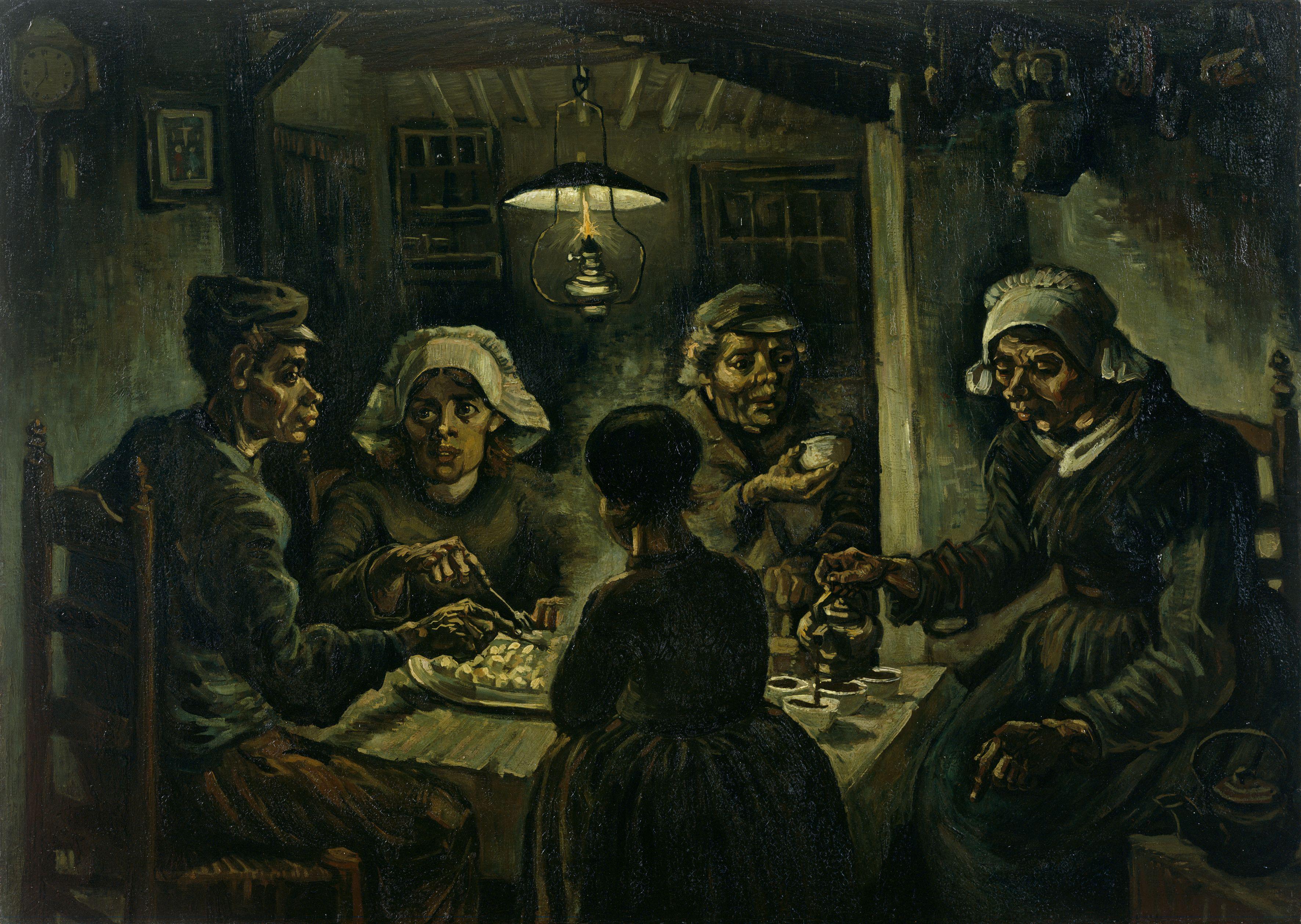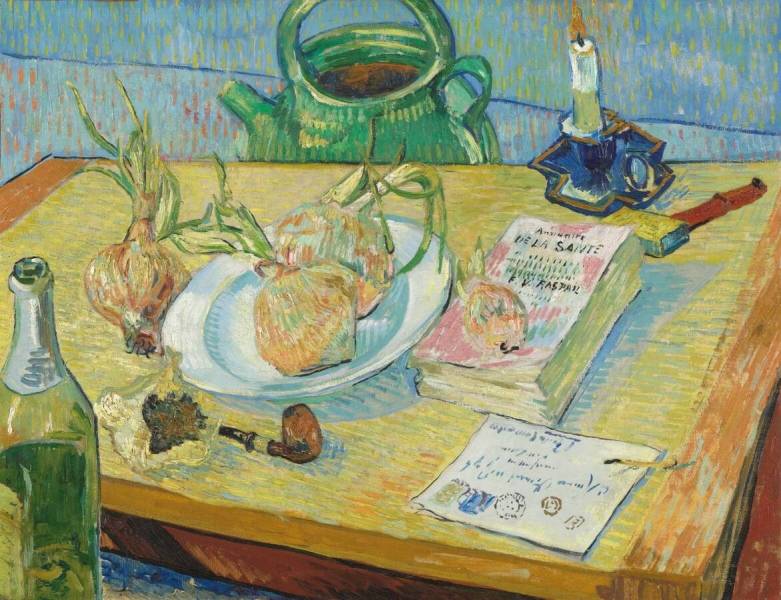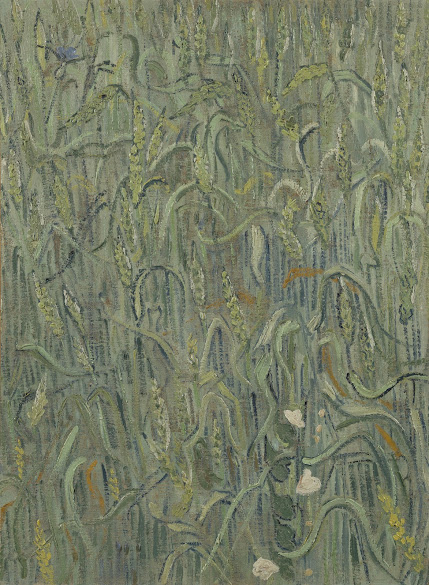Museum of Fine Arts, Houston (MFAH),
March 10, to June27, 2019
Few artists have left behind as complete an account of their life and work as
Vincent van Gogh(1853–1890). In March 2019, the Museum of Fine Arts, Houston,
presents Vincent van Gogh: His Life in Art, an exhibition showcasing key
passages in the artist’s life, fromhisearly sketchesto his final paintings, and
chronicling his pursuit of becoming an artist.
His Life in Art presents more than 50
portraits, landscapes, and still lifes, the exhibition will be on view at the
Museum of Fine Arts, Houston(MFAH), from March 10, to June27, 2019.
In a majorcollaboration, The Van Gogh Museum, Amsterdam, and the Kröller-Müller Museum, Otterlo, which, together,holdthe largest collections in the world of Van Gogh’s work, will lend pieces to Houston.“This exhibition will offer visitors avivid portrait of Van Gogh’s evolution as an artist,”commented MFAH Director Gary Tinterow. “We are grateful to the Van Gogh and Kröller-Müller Museums for lending so many of these rarely traveled masterworks from their collections for this exclusive presentation here in Houston.” “
The popular story of Van Gogh has tended to focuson his last few years and his death,” said David Bomford, curator of the exhibition and chair, Department of Conservation, and Audrey Jones Beck curator, Department of European Art, MFAH. “But there is a rich and complex narrative that starts much earlier, one that is defined by Van Gogh’s tremendous drive to become an artist.”
Exhibition Overview
The exhibition explores Vincent van Gogh’s early years as an artist in theDutch village of Nuenenfrom 1883to 1885; his renewed inspiration following exposure to fellow artists and city life in Paris; his further development in Arles,where he created series of landscapes and vibrant portraits; and lastly his inspiration from nature,reflected in the paintings he created toward the end of his life inSaint-Rémy and Auvers.
In addition, facsimiles of Van Gogh’s letters will build outthe narrative of the artist’s life. Incorporated throughout the exhibition, they trace his hopes of becoming a marketable painter in Paris, his longing to live among a community of artists, and his struggles with his personal relationships and his mental health.Early
Years as an Artist
Vincent van Gogh became an artist at 27, taking up painting in 1881after stintsas an art dealer, teacher, bookseller, and minister, all unsuccessful. His brother, Theo, encouraged him to concentrate on drawing, spurring Van Gogh to work on his technique and connect with other artists. He was largely self-taught, and his early work reflects an engagement with Realism and an interest in conveying both the physical and psychological conditions of his subjects.
Van Gogh sent his work to Theo in exchange for the financial support his brother offered. “I’m sending you three scratches that are still awkward, but from which I hope you’ll nonetheless see that there’s gradual improvement. You must remember that I haven’t been drawing for long, even if I did sometimes make little sketches as a boy,”Van Gogh wrote in a letterto his brother on April 2, 1881.
His development as a painter continued, as he produced farm scenes in the village of Nuenen following in the footsteps of admired artists such as Jean-François Millet. He studied and recorded every facet of rural life, realistically portraying with the harsh circumstances of farm laborers rather than idealizing them. During this time, Van Gogh’s character studies culminated in portrayals of rurallife.



Three of Van Gogh’sstudies for The Potato Eaters (1885), his first major painting and one of his best-known, will be on view, alongside sketches of the day-to-day life of villagers.
Van Gogh’s works from his time in Nuenen also feature an old church tower,which he painted as a tribute to those whohad been laid to rest among the fields they had planted.
In Search of Renewal
From Nuenen, Van Gogh left for Antwerp to enroll in an art academy and take drawing classesin November 1885. Abandoning the theme of rural farm life, he shifted his focus to portraiture.
Shortly following, he left for Paris where he moved in with Theo.The city inspired a brighter palette,while his friendships with Emile Bernard and Henri de Toulouse-Lautrec had a major influence on his work.
Featured in this section is a portrait of Agostina Segatori, the owner of Café du Tambourin, a gathering spot for Parisian artists that Van Gogh frequented.
While in Paris, he discovered a new source of inspiration in Japanese woodcuts, which he had begun to collect. Their influence is reflected in the bold outlines, dramatic cropping, and color contrasts of Van Gogh’s work.
Light and Color in the South
After two years in Paris, Van Gogh grew weary of city life and longed for a setting like those in the Japanese landscapes he admired. He hoped to find itin the south of France, and relocated to Arles. “I noticed some magnificent plots of red earth planted with vines, with mountains in the background of the most delicate lilac. And the landscape under the snow with the white peaks against a sky as bright as the snow was just like the winter landscapes the Japanese did,” he wrote to Theo on February 21, 1888.
With this return to the countryside,Van Gogh developeda recognizable style of his own, characterized by long, rhythmic brushstrokes and thick layers of paint in increasingly brighter colors.Inspired by the bright light and the colorsof southern France, he painted fields of wheat, vineyards, and vibrant portraits.

But months of personal crisis followed. Still Life with a Plate of Onions (1889) was one of the first paintingsVan Gogh completed after returning home from the hospital where he was treated after slicing off his ear.
On that day, January 17, 1889, he wrote to his brother Theo that he intended to begin working to get used to painting againand had already done a few studies. But Van Gogh’s mental health continued to fluctuate. He admitted himself to Saint-Paul-de-Mausole psychiatric asylum in Saint-Rémy in May 1889.
In a majorcollaboration, The Van Gogh Museum, Amsterdam, and the Kröller-Müller Museum, Otterlo, which, together,holdthe largest collections in the world of Van Gogh’s work, will lend pieces to Houston.“This exhibition will offer visitors avivid portrait of Van Gogh’s evolution as an artist,”commented MFAH Director Gary Tinterow. “We are grateful to the Van Gogh and Kröller-Müller Museums for lending so many of these rarely traveled masterworks from their collections for this exclusive presentation here in Houston.” “
The popular story of Van Gogh has tended to focuson his last few years and his death,” said David Bomford, curator of the exhibition and chair, Department of Conservation, and Audrey Jones Beck curator, Department of European Art, MFAH. “But there is a rich and complex narrative that starts much earlier, one that is defined by Van Gogh’s tremendous drive to become an artist.”
Exhibition Overview
The exhibition explores Vincent van Gogh’s early years as an artist in theDutch village of Nuenenfrom 1883to 1885; his renewed inspiration following exposure to fellow artists and city life in Paris; his further development in Arles,where he created series of landscapes and vibrant portraits; and lastly his inspiration from nature,reflected in the paintings he created toward the end of his life inSaint-Rémy and Auvers.
In addition, facsimiles of Van Gogh’s letters will build outthe narrative of the artist’s life. Incorporated throughout the exhibition, they trace his hopes of becoming a marketable painter in Paris, his longing to live among a community of artists, and his struggles with his personal relationships and his mental health.Early
Years as an Artist
Vincent van Gogh became an artist at 27, taking up painting in 1881after stintsas an art dealer, teacher, bookseller, and minister, all unsuccessful. His brother, Theo, encouraged him to concentrate on drawing, spurring Van Gogh to work on his technique and connect with other artists. He was largely self-taught, and his early work reflects an engagement with Realism and an interest in conveying both the physical and psychological conditions of his subjects.
Van Gogh sent his work to Theo in exchange for the financial support his brother offered. “I’m sending you three scratches that are still awkward, but from which I hope you’ll nonetheless see that there’s gradual improvement. You must remember that I haven’t been drawing for long, even if I did sometimes make little sketches as a boy,”Van Gogh wrote in a letterto his brother on April 2, 1881.
His development as a painter continued, as he produced farm scenes in the village of Nuenen following in the footsteps of admired artists such as Jean-François Millet. He studied and recorded every facet of rural life, realistically portraying with the harsh circumstances of farm laborers rather than idealizing them. During this time, Van Gogh’s character studies culminated in portrayals of rurallife.

Three of Van Gogh’sstudies for The Potato Eaters (1885), his first major painting and one of his best-known, will be on view, alongside sketches of the day-to-day life of villagers.
Van Gogh’s works from his time in Nuenen also feature an old church tower,which he painted as a tribute to those whohad been laid to rest among the fields they had planted.
In Search of Renewal
From Nuenen, Van Gogh left for Antwerp to enroll in an art academy and take drawing classesin November 1885. Abandoning the theme of rural farm life, he shifted his focus to portraiture.
Shortly following, he left for Paris where he moved in with Theo.The city inspired a brighter palette,while his friendships with Emile Bernard and Henri de Toulouse-Lautrec had a major influence on his work.
Featured in this section is a portrait of Agostina Segatori, the owner of Café du Tambourin, a gathering spot for Parisian artists that Van Gogh frequented.
While in Paris, he discovered a new source of inspiration in Japanese woodcuts, which he had begun to collect. Their influence is reflected in the bold outlines, dramatic cropping, and color contrasts of Van Gogh’s work.
Light and Color in the South
After two years in Paris, Van Gogh grew weary of city life and longed for a setting like those in the Japanese landscapes he admired. He hoped to find itin the south of France, and relocated to Arles. “I noticed some magnificent plots of red earth planted with vines, with mountains in the background of the most delicate lilac. And the landscape under the snow with the white peaks against a sky as bright as the snow was just like the winter landscapes the Japanese did,” he wrote to Theo on February 21, 1888.
With this return to the countryside,Van Gogh developeda recognizable style of his own, characterized by long, rhythmic brushstrokes and thick layers of paint in increasingly brighter colors.Inspired by the bright light and the colorsof southern France, he painted fields of wheat, vineyards, and vibrant portraits.

Vincent van Gogh, Still Life with a Plate of Onions, early January 1889, oil on canvas, Kröller-Müller Museum, Otterlo, The Netherlands. © Kröller-Müller Museum
But months of personal crisis followed. Still Life with a Plate of Onions (1889) was one of the first paintingsVan Gogh completed after returning home from the hospital where he was treated after slicing off his ear.
On that day, January 17, 1889, he wrote to his brother Theo that he intended to begin working to get used to painting againand had already done a few studies. But Van Gogh’s mental health continued to fluctuate. He admitted himself to Saint-Paul-de-Mausole psychiatric asylum in Saint-Rémy in May 1889.
Nature as a Source of Enduring Inspiration
At the asylumin
Saint-Rémy, Van Gogh created dozens of paintings of the gardens of the
institution, the fields outside his window,and of thefew possessions that he hadin
his room. During this period, in which he produced some of his most iconic
masterworks, including Starry Night and Irises, he also ventured into the wheat
fields and olive groves.
In his studio, he made a series of paintings after
prints, resulting in such idyllic scenes as

Peasant Woman Binding Wheat Sheaves (1889), once again inspired by the work of Millet.

Peasant Woman Binding Wheat Sheaves (1889), once again inspired by the work of Millet.
In May of 1890, Van Gogh left
Saint-Rémy for Auvers, seeking out the care of the doctor Paul Gachetat the
suggestion of painter Camille Pissarro.
Van Gogh spent his last weeks painting
landscape after landscape, including

Ears of Wheat in June 1890, one of the latest of his works in the MFAH exhibition. He committed suicide on July 27 of that year.

Ears of Wheat in June 1890, one of the latest of his works in the MFAH exhibition. He committed suicide on July 27 of that year.
Publication
This exhibition is accompanied by an illustrated catalogue
highlighting the 50 drawings and paintings, drawn primarily from the Van Gogh
Museum, Amsterdam, and the Kröller-Müller Museum, Otterlo.
|
||||
|
||||
|
||||
|
||||
|
||||
|
||||